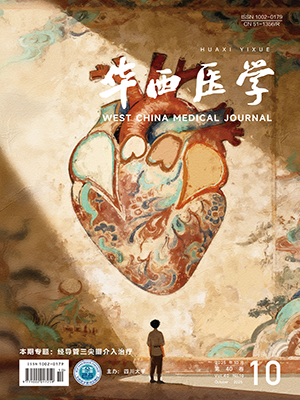| 1. |
Clinical and Laboratory Standards Institute. H26-A2 Validation, verification and quality assurance of automated hematologyanalyzers, 2010.
|
| 2. |
Ndhaus LM. Body fluid cell counts by automated methods. Clin Lab Med, 2015, 35(1): 93-103.
|
| 3. |
Sandhaus LM, Ciarlini P, Kidric D, et al. Automated cerebrospinal fluid cell counts using the Sysmex XE-5000: is it time for new reference ranges?. Am J Clin Pathol, 2010, 134(5): 734-738.
|
| 4. |
叶应妩, 王毓三, 申子瑜. 全国临床检验操作规程. 3版. 南京: 东南大学出版社, 2006: 312-313.
|
| 5. |
戴芸, 杨辉, 乐华文. 胸腹水有核细胞计数自动化检测探讨. 国际检验医学杂志, 2013, 34(7): 859, 863.
|
| 6. |
李玲, 刘文康, 李博, 等. 多台全自动血细胞分析仪检测结果的比对研究. 现代检验医学杂志, 2012, 27(3): 119-121.
|
| 7. |
陈群, 聂署萍, 张志城, 等. 全自动血液分析仪检测特殊体液有核细胞与手工法的结果比对. 国际检验医学杂志, 2014, 35(21): 2949-2950.
|
| 8. |
张金花, 胡娟, 李君安. Sysmex XE-5000 全自动血细胞分析仪体液模式对胸、腹腔积液白细胞计数与分类计数的结果分析. 国际检验医学杂志, 2015, 36(1): 45-46.
|
| 9. |
白雪丽. XT-4000i 多功能全自动血细胞分析仪在体液细胞检测中与手工法的应用比较. 中国医疗设备, 2012, 27(1): 75-76.
|
| 10. |
夏永泉, 徐学静, 王贤. Sysmex XE-5000 血液分析仪体液模式白细胞计数准确性的探讨. 国际检验医学杂志, 2013, 34(23): 3228-3229.
|
| 11. |
Genc S, Dervisoglu E, Omer D, et al. Evaluation of cell counting in body fluids: comparison of two automated hematology analyzers with manual microscopy. Clin Lab, 2016, 62(12): 2449-2453.
|
| 12. |
Fleming C, Russcher H, Brouwer R, et al. Evaluation of Sysmex XN-1000 high-sensitive analysis (hsa) research mode for counting and differentiating cells in cerebrospinal fluid. Am J Clin Pathol, 2016, 145(3): 299-307.
|
| 13. |
Buoro S, Seghezzi M, Mecca T, et al. Evaluation of Mindray BC-6800 body fluid mode for automated cerebrospinal fluid cell counting. Clin Chem Lab Med, 2016, 54(11): 1799-1810.
|
| 14. |
郭唯, 高春玲, 刘娜. SysmexUF-500i 与 XS-500i 在体液细胞计数中的应用评价. 临床检验杂志, 2013, 20(21): 98-99.
|
| 15. |
张慧, 李琳, 续薇. Sysmex XE-5000 全自动血细胞分析仪体液模式与手工法体液细胞计数及分类的比较. 国际检验医学杂志, 2015, 36(22): 3238-3239, 3242.
|
| 16. |
Yang D, Zhou Y, Chen B. Performance evaluation and result comparison of the automated hematology analyzers Abbott CD 3700, Sysmex XE 2100 and Coulter LH 750 for cell counts in serous fluids. Clin Chim Acta, 2013, 419: 113-118.
|
| 17. |
Liang X, Chen J, Xiao X, et al. Automated cell analysis of cerebrospinal fluid with XE-5000. Clin Lab, 2014, 60(11): 1785-1793.
|




